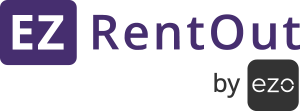
Warehouse, on field, and office teams all deal with the consequences of inefficient tool management. Well-planned tool management is one of the primary concerns for tool-intensive companies, with prominent examples being the construction, manufacturing, and maintenance sectors.
Even though most of these companies understand the need for efficient tool management to optimize business processes, few take any steps at all in this direction. With more and more businesses migrating their functions to the digital realm, a tool tracking software can help streamline processes immensely.
Companies in industries like manufacturing and construction have several teams interlinked with their assets. The warehouse team handles inventory levels and oversees pick tickets. The field team works directly with the tools in manufacturing and maintenance procedures. Finally, the office team oversees this entire process, keeps track of data logs, and monitors business progress. This is true whether you’re dealing with small tool tracking or construction tool tracking.
All these units interact with your tools and bear the brunt of inefficient tool tracking in distinct ways. An automated tool tracking system can help tackle all the different challenges each of your team members has to deal with. Below, we’ll take you through these challenges with respect to employees in the warehouse, on the field, and at offices.
Warehouse Teams

Warehouse teams are in charge of supervising idle equipment on-shelf and issuing it when requested by field teams. Warehouses store a multitude of standby tools and require a substantial labor force to sift through them. Most companies lack the insight and tracking abilities to accurately gauge inventory requirements.
This is why miscalculations can quite often lead to ordering too much of an item, or not enough of it. Based on this, here are some challenges faced by employees in warehouses:
1. Inventory loss through theft and negligence
When management approves a request for a certain tool, the warehouse team might check its logs and inform the field team that they have run out of it. Conversely, with inventory shrinkage, warehouse teams assume they have assets that they actually don’t.
This loss of inventory stems from inaccurate record keeping, damaged tools, employee theft, and vendor fraud and can be much more devastating than knowing you are short on a tool. Sometimes when a request for a tool comes in, the warehouse team could spend hours looking through the inventory, only to learn that it is a ghost asset they don’t even have!
Such surprises cause major setbacks because they require a lot of time and energy from the warehouse teams. If several ghost assets are finally identified, a tool audit may be conducted to isolate the sources of discrepancies but audits are extremely labor-intensive and time-consuming. The warehouse team might even have to put all other processes on hold temporarily.
With a tool tracking software in the picture, you can tag all your tools and store their information in an online database. You can have a unique identification number for each tool in your possession and can track its current custodian, location, and calibration status. Lifecycle management helps predict tool expiration time so that replacements can be arranged in advance.
In addition, logging details can curb employee theft and also help identify where and when a tool went missing. Low inventory alerts mean managers can be informed when inventory is about to run out, so that it can be replenished in a timely manner. You can even plan audits in advance to avoid any surprises in the future. All of this means a great deal more accountability when it comes to your tool inventory.
2. Inefficient and costly stock control
Housing more inventory than required also comes with its own set of problems. The main one springs from the belief that companies need to ensure their warehouses are large enough to accommodate all their inventory.
Warehouse managers, therefore, feel that they need to enlist more pickers to manage their growing space and extra inventory, and this translates to additional work for pickers and higher costs across the board. Excess inventory is also a lot harder to look through. It complicates storage and makes it hard for pickers to locate items with hundreds of possible locations and many thousands of tools in the mix.
A tool tracking software can help track usage for assets and in turn, facilitate tracking the demand for each tool. This way warehouses can practice lean inventory, improve their space utilization, and right-size their workforce. The option of specifying subcategories further simplifies locating assets and helps save considerable time.
3. Errors in handling and logging asset data
Warehouse tasks are particularly prone to human error and employee negligence, as there are so many employees and items in the mix! Picking errors can waste a lot of time and double up work for warehouse management.
Additionally, they also impact field operations as techs have to wait longer for correct tools to arrive. Incorrect information about the contents of a box, for example, can cause warehouse staff to mishandle fragile items when they require special care.
Managing pick tickets from a tool tracking software helps minimize these errors. Digital pick tickets have better readability and are quicker to regenerate as you can reuse older templates. You can even add custom fields and define custodianship details.
In this manner, every tool can be easily verified before it is sent out by using the built-in scanner in the mobile app. Not only can you do lightning-fast verification this way, but the tool tracking app means that every worker is equipped with a free scanner!
Field Teams

Teams on the field consist of the technicians that use the company tools in their work operations. This could involve manufacturing, construction, or maintenance tasks. Poor tool management mostly affects the people directly in contact with the equipment, which is why it is important to pay special attention to the challenges faced by field teams:
1. Poor compliance with safety standards
With constant use, your equipment becomes susceptible to wear and tear. Often there is no way of estimating how old a tool is or how many times it has been serviced. Malfunctioning tools escape detection and end up becoming a hazard for workers. This is a pressing concern since 2 construction workers die each day in the US due to workplace accidents.
Routine inspection can help curtail these accidents but proper maintenance requires monitoring multiple things simultaneously. This is because a company might own several dozen tool types, with each of them requiring a specific maintenance program.
With a tool tracking software, you can schedule different services for different tools, multiple services for the same tool, or even opt for the frequency of your choice. The software can also send out alerts when a tool is due for service, making sure no piece of equipment misses out on important repairs.
2. Low workforce accountability
Mishandled tools have always plagued asset-intensive companies. Technicians might not use equipment with care, as they know that any damages cannot be pinned on them. They also tend to delay returning tools, hide their favorites, and even leave some on the work site. Having a tool tracking setup enforces the idea that tools are important for a company and should not be taken for granted.
With a tool tracking software in the picture, tools are checked out to workers and tied to them in the database. Once they know they will be held accountable for whatever their tool is subjected to, they try ensuring that it retains the same state while in their possession.
If tools are handled with care, they will require maintenance less frequently and equipment downtime will decrease. This saves you a lot of money and also lowers administrative burdens. Workers might also be quick to return these items, as that essentially absolves them of future responsibility. This increases the availability of tools at your organization, and accelerates the productivity of your technicians.
3. Schedule overruns and scope creep
Poor accountability and inefficient maintenance contribute heavily to schedule overruns. Accidents, faulty tools, and item unavailability all disrupt workflows and delay projects. This kind of gradual increase in the time and resources required by projects is called scope creep, and is extremely common for teams on the field.
Fieldwork is obviously subject to the availability of tools and needs to be planned around it in order to achieve smooth workflows. Research by McKinsey&Company demonstrated that 98% of all construction projects go overtime, and 77% of all are late by 40% of the originally intended span. Scope creep and delays are therefore hugely unattractive to companies.
Adding a tool tracking software to the mix will allow you to coordinate work schedules with tool availability. Technicians will also have the freedom to reserve equipment in advance for the duration of their project. This will allow uninterrupted workflows and lead to greater efficiency.
With the software, you also have visibility into unavailable tools so you can order equipment for important projects in advance. Inspecting them before these projects, or ensuring that they have gone through their maintenance cycles, will also help ensure top functionality.
Office Teams

The resolution of company problems and growth strategies are invariably devised at office desks. Even though employees responsible for overseeing company operations have no direct link with the company tools, much of their work revolves around extracting their data to gain valuable insight into work operations. The decisions they make can improve or decimate workforce productivity, which is why it is important to pay particular attention to the challenges these teams face:
1. Problems with data quality
The number one problem with asset data is the lack of up-to-date information. Company statistics change every day. Relying on paper documents, which can easily get lost or damaged, can have adverse effects on the analysis process. Churning out new reports every time a change is made and delivering them to relevant personnel – who in turn are trying to keep track of several other documents – only complicates the process further.
If you think spreadsheets are any better, think again. Every 9 out of 10 spreadsheets contain errors and lead to unreliable reporting. One accidental formula or entry change impacts the entire data pool and results in skewed predictions.
Migrating to a tool tracking software lets you have an online database that can be updated from anywhere, and at any time. If employees throughout the company are taught to create timely logs for every activity, everyone in the company can have real-time data, aiding communication and improving insights. With the option to define user access, companies can also increase their data security.
2. Missed notifications and warranties
Business predictions can often be skewed because companies miss important notifications related to procurement, maintenance, and the like. With real-time alerts, companies can generate more reliable reports and extract better predictions for their business. A tool tracking software enables you to create and forward alerts for various actions, helping you stay on the ball and work out more efficient growth strategies.
Often offices find it hard to keep track of warranties and licenses for their tools. Safety and health regulations are an added burden on the shoulders of office teams, and the weight is excessive because there is typically a myriad of tools to manage.
With a tool tracking software, these documents can be taken online and monitored. Expiry dates can be logged onto the database and alerts can be issued when an expiration date is approaching so that timely renewal is possible.
3. Growth and scalability issues
All businesses have the long-term goal of expanding their operations to increase profits. When companies begin to achieve high ROIs and better brand recognition, expanding seems like the next natural step. However, with expansion come costly redesigning processes and the implementation of new teams and business structures. Managers begin worrying over accommodating additional tools and workforce into their existing framework. Figuring this out can be hard to do manually.
Tool tracking software as a scalable application can cater to any volume of asset data. Additional tool and custodian fields can be easily inserted so companies don’t have to move on to a new platform every time they scale. In addition, helpful integrations (such as those with ticketing software Zendesk, for example) can help tool-focused companies coordinate different activities from one central space. This not only lowers costs, but also greatly reduces the human resources required for effective growth.
BOOSTING TEAM PERFORMANCE WITH TOOL TRACKING SOFTWARE
Tool tracking software can be a great investment for companies, provided that their teams are using it correctly. Digital tools require technology to work in tandem with humans so providing adequate training to your staff and starting small are both smart strategies. Logging high-value or frequently-used goods first can make the transition smoother and less intimidating, allowing your employees time to learn the software.
Companies can also put a tool crib manager in charge of monitoring issued tools through the software. Ownership helps companies stay on top of inventory numbers and grow sustainably.
About EZOfficeInventory
EZOfficeInventory is a tool tracking system that helps production managers with asset allocation, maintenance, and reports. We’ve worked with scores of companies in the AV industry, and have helped them lower costs, optimize workflows, and improve transparency from one centralized location.








